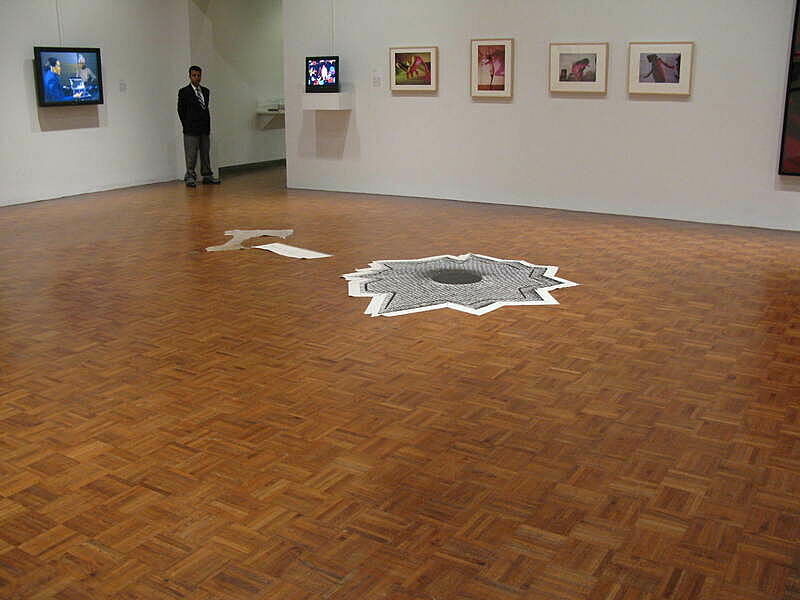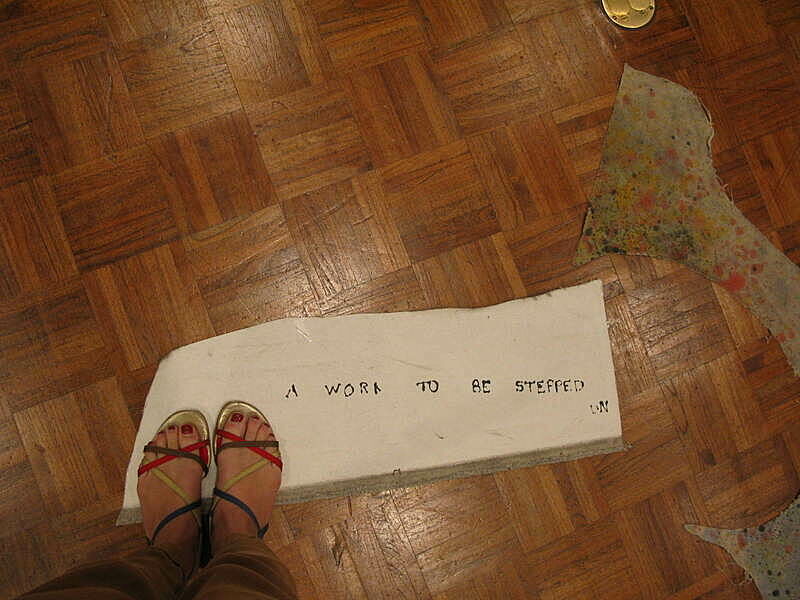Off the Wall, On the Floor
Sep 23, 2010
For me, one of the most thought-provoking and challenging works in Off the Wall: Part 1—Thirty Performative Actions was Painting to Be Stepped On, in which artist Nate Lowman realized one of the instructions from Yoko Ono’s Grapefruit. Ono’s book is comprised of instructions for other individuals to enact, such as:
PAINTING TO BE STEPPED ON
Leave a piece of canvas or finished painting on the floor or in the street.
1960 Winter
Lowman’s three paintings were in the middle of the gallery and read “A Work to Be Stepped On.” Despite the invitation, it was a bizarre sensation to place my feet on what I knew to be a work of art. Having visited many museums, I have become acclimated to remaining at a certain distance from works of art. Indeed, guards or “Please Do Not Touch” sign usually ensure that visitors do not get too close to the work. As I walked up to the piece, I looked around to the guards as if for authorization but receiving no response, I mustered up my courage to take the step.
Because Lowman’s works are so delicate, it felt strange, disrespectful, and transgressive to step on them. It is one thing to march down Carl Andre’s Twenty-Ninth Copper Cardinal in the next gallery, knowing that the copper can withstand the impact of my feet. It is quite another to tread on cut-out pieces of canvas lying on the gallery floor. Yet, in alignment with Ono’s instructions and curator Chrissie Iles’ vision for Off the Wall, stepping on the art is intended as a kind of performance that forces visitors to reconsider sacrosanct notions of what constitutes expected behavior in art and museum spaces.
On my way out of the gallery, I spotted a woman stride across Painting to Be Stepped On without blinking. I had seen her read the wall label and gingerly walk around the piece a few minutes earlier. This time, she was walking towards the second-floor restrooms. Indeed in that moment, art converged with everyday life.
By Sophie Cavoulacos, Education Intern


